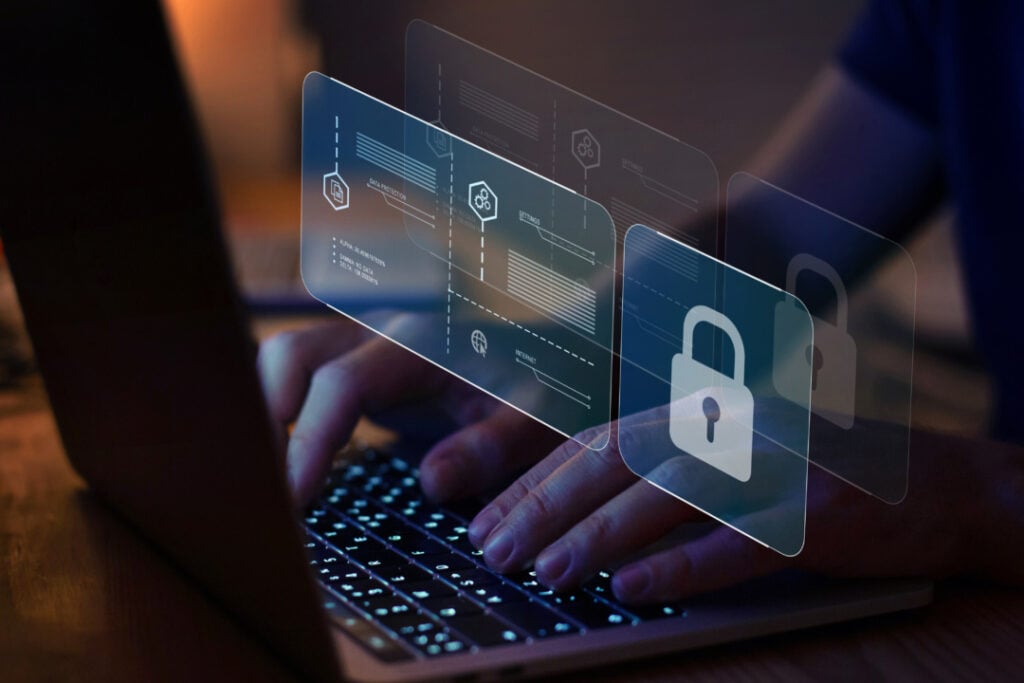Have you ever changed your Wi-Fi password and then spent 40 minutes reconnecting every device in your house? The printer won’t cooperate, the smart TV sulks in silence, and your phone suddenly forgets everything. It’s a small reminder of how deeply digital life is embedded into daily routines—and how quickly everything falls apart when systems stop working.
Now imagine that on an enterprise scale. Only instead of streaming movies, it’s critical patient data, payroll systems, or infrastructure services hanging in the balance. When something goes wrong—and it will—the difference between a brief disruption and a full-blown crisis comes down to how well you recover, not how tightly you locked the doors beforehand.
In this blog, we will share why recovery should be central to your cybersecurity strategy, how companies are rethinking resilience, and what practical steps you can take to prepare for the moment prevention fails.
Prevention Isn’t the Full Picture
Security conversations still center on how to keep threats out. Firewalls, encryption, multi-factor authentication—they’re important. But they’re no longer enough. In today’s threat landscape, assuming you can block every attacker is wishful thinking. And the ones who do break through? They aren’t always obvious.
Many of today’s breaches don’t start with a brute force hack. They begin with something quieter: a misconfigured account, a forgotten tool, or a well-timed phishing link. And when attackers do get in, they don’t set off alarms. They linger. They study the system. They wait for the moment that guarantees maximum damage.
That’s why more organizations are shifting focus from “How do we stop the breach?” to “What do we do after it happens?” Because while every company wants to be secure, the ones that survive are the ones prepared to recover.
This shift is where platforms like Semperis crisis management software become essential. Unlike traditional security tools that only focus on defense, Semperis is built for what happens next. It helps organizations move from chaos to coordination during a cyber crisis, with streamlined tools for communication, role assignment, and real-time response tracking.
Semperis doesn’t try to prevent the breach. It assumes one is coming—and equips you to limit the damage, restore trust, and resume operations fast.
When Response Becomes the Business Priority
Let’s break down what actually happens when an organization is under attack. In theory, the incident response (IR) plan kicks in. Everyone knows their role. Communication is clear. Systems begin recovery mode. Downtime is minimal.
In reality? It’s often a mess. Roles are unclear. Contacts are outdated. Decisions stall. IT and legal play a game of digital telephone. Meanwhile, customers, employees, and regulators demand answers you’re not ready to give.
The problem isn’t just technical. It’s human. Teams are unprepared, not because they don’t care, but because they’ve practiced prevention—not recovery. And when a real crisis hits, there’s no room for guesswork.
Semperis recognized this problem years ago. That’s why their platform focuses on operational resilience. It provides a single command center to manage an attack while it’s happening. Whether you’re coordinating with technical teams, legal departments, or outside partners, everyone works from the same real-time dashboard. It’s the difference between scrambling and leading.
Think of It Like Disaster Preparedness
If you live in a hurricane zone, you don’t wait for the winds to start howling before you buy bottled water. You prep early. You know what to do when the alert hits. Cybersecurity needs the same mindset.
Threat actors are no longer teenage hackers in hoodies. They’re organized, funded, and relentless. And they’re not just targeting Fortune 500 companies. They go after school districts, municipalities, manufacturing plants—anywhere they can create chaos and demand payment.
This is why recovery matters. Because even the most secure systems have weak spots. But not every breach has to turn into a catastrophe. When your teams know how to respond, when communication flows, when tools like Semperis give you structure in the middle of the storm—you’re no longer just reacting. You’re recovering.
The Cost of Delay Is Bigger Than You Think
A slow recovery doesn’t just mean a longer outage. It means lost customers, regulatory fines, media scrutiny, and a hit to your reputation that lasts long after the systems are back online.
In fact, recent industry reports show that while 96% of organizations have a crisis response plan on paper, only 10% say they can execute without major blockers. The biggest pain points? Outdated tools, unclear processes, and communication failures.
And that’s not surprising. Most plans are written once, approved by compliance, and forgotten. They’re not tested. They don’t reflect how fast things move in a real breach. And when it matters most, they fail.
That’s why resilience needs to be more than a buzzword. It needs to be built into the system. Not just technical systems, but business systems. Leadership, legal, HR, communications. Cyber incidents touch every part of the business. Recovery has to be cross-functional.
The Human Side of Resilience
Cybersecurity tends to sound technical: firewalls, encryption and privilege escalation. But recovery is human. It’s about leadership, trust, and timing.
Your team wants to do the right thing. But in a crisis, even the best teams struggle without a clear process. That’s why recovery planning should be built with real humans in mind. Clear instructions. Minimal friction. Up-to-date contact lists. Tools that work on mobile. Dashboards that actually make sense.
Because when systems fail, people still have to lead. The companies that do it best make recovery everyone’s business—not just IT’s problem.
Looking Ahead
Cybersecurity used to be about keeping the bad guys out. Now, it’s about what happens when they get in. Prevention isn’t dead—but it’s incomplete.
Recovery is no longer optional. It’s the foundation of digital trust. It’s what regulators want to see. It’s what your customers expect. And it’s the only way to navigate a world where breaches are not a possibility—they’re a guarantee.
You don’t need a perfect system. You need a system that knows how to bend without breaking. That’s what tools like Semperis are built for. Not to stop the storm—but to keep your ship steady while it passes.
So ask yourself this: when the next breach hits, will you be prepared to recover—or just hope you don’t have to?
Sandra Larson is a writer with the personal blog at ElizabethanAuthor and an academic coach for students. Her main sphere of professional interest is the connection between AI and modern study techniques. Sandra believes that digital tools are a way to a better future in the education system.




![‘Anemone’ Review – Ronan Day-Lewis’ Debut Feature Is A Bold Visual Feast Anchored By Daniel Day-Lewis’ Tremendous Return [NYFF 2025] ‘Anemone’ Review – Ronan Day-Lewis’ Debut Feature Is A Bold Visual Feast Anchored By Daniel Day-Lewis’ Tremendous Return [NYFF 2025]](https://cdn.geekvibesnation.com/wp-media-folder-geek-vibes-nation/wp-content/uploads/2025/09/Anemone-Still-300x126.jpg)

